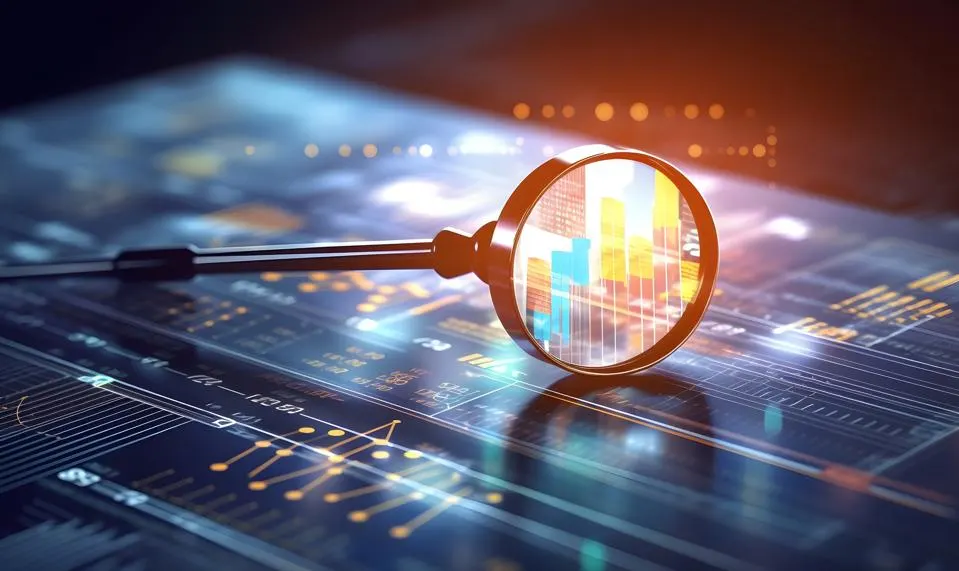Why Are Some NFTs Worth Millions – And Is The Bubble About To Burst?
22 March 2022
A year or so back, not many people had heard of NFTs (non-fungible tokens) – they certainly weren’t being regularly traded for six-figure sums, and occasionally even fetching tens of millions of dollars!
The recent craze, however – illustrated by the term being picked as the word of the year for 2021 by Collins Dictionary – has generated a huge amount of interest in the subject. This has brought investors as well as collectors into the market, resulting in some enormously high-value sales.

These include:
- Clock – created as a collaboration between the artist Pak and Julian Assange, this artwork counts the days that the Wikileaks founder has been imprisoned. It sold in February this year for $52.7 million.
- Beeple’s The First 5000 days – a collage of work by the artist Beeple who has created one piece every day starting in 2007. This sold for £69.3 million.
- The Merge – Another Pak piece, and the most expensive NFT ever sold, purchased by a collective of 30,000 buyers, who between them paid $91.8 million.
Many people have said that these valuations and sale prices are ridiculous for what essentially amounts to certificates of ownership for digital artwork. They believe the bubble may be about to burst, and many people who have bought NFTs as investments, believing their price will go up, are set to be hit by big losses.
On the other hand, others say that the concept of NFTs is fundamentally transformational and will define a new class of digital goods and services that will be widely traded and highly valued as society becomes increasingly digital.
So, let’s take a look at both sides of the debate, starting by examining exactly what an NFT is and why they have been so highly sought after.
What is an NFT?
In simple terms, an NFT is a unique (non-fungible) token that’s stored on a blockchain – an encrypted, distributed type of database that can’t be altered by anyone who doesn’t have the permission to do so.
Most generally, they are used as a type of “certificate of ownership” – especially for a digital asset. These assets have included artwork, collectible trading cards, music, videos, short animated clips, or anything else that can be stored on a computer as digital information.
Since, unless they are released into the public domain, assets of this type are generally (under copyright laws) “owned” by their creators, or organizations that commissioned them to be created, they can be sold or passed on. However, as they exist as digital data, they can essentially be copied and replicated an infinite number of times with no real way to identify the owner.
NFTs were created as a way of solving the problem of digital ownership of unique items. Generally, NFTs are stored on blockchains that allow the use of "smart contracts." These are executable pieces of code built into the NFT. One way they can be used is by initiating a payment to the original creator every time an NFT is re-sold. Fans of the concept believe that this will lead to fairer treatment for artists and creators, who can stipulate terms under which their work is used once it leaves their hands.
Why do some people think they are valuable?
The first question that springs to many people’s minds is why should I pay money for digital information that can often be copied or downloaded from the internet for free? Can’t we “own” any digital image simply by right-clicking on it and hitting “Save”?
Put simply, NFTs allow unique digital assets to have scarcity – one of the fundamental principles that allows anything – from gold to water – to have value in our economies. The artist or creator will only issue one NFT – a certificate of ownership – per asset, and the holder of that NFT can prove, via blockchain validation, that they are the rightful owner of the asset.
Our lives are becoming increasingly digital and virtual, with many firmly believing that we are heading towards the creation of a metaverse – an interconnected, persistent virtual reality of digital worlds and environments where we will work, play, learn, relax and socialize.
In such a world – just as in the real one – people will want to own unique assets – from a pair of sneakers to a house – in order to express their personality, design their own ideal environment, or even just simply to show off. After all, why should the way we behave in the virtual world be any different to the way we behave in the real one?
A great example of this can be found in the gaming world, where players will often want to own a cosmetic item such as a costume for their avatar or an item that confers in-game functionality like a weapon or a vehicle. For a long time, gamers have been buying these items with in-game currency, and increasingly they will be doing so with real-world money or crypto-currency.
In addition to this, many people believe that the use for NFTs will evolve beyond the fairly simple use cases such as images and music we have seen so far. They say that NFTs will be used for legal documents, deeds of ownership, certificates of qualifications, and to grant rights of access.
Is this a bubble, and is it about to burst?
As with anything that generates a lot of sudden hype and interest, there are fears that we could be experiencing a bubble that's set to burst at any moment. If this is true, then inexperienced investors that have bought into the excitement without really understanding where the value comes from are the most likely to get their fingers burned.
Critics of the concept of NFTs point to the parallels between previous boom-and-bust economies such as the .com crash of 2000 as well as economic concepts such as the “greater fool” theory, which states that some assets are intrinsically worthless but achieve value when a seller can find someone more clueless than them to pass them on to!
Many of these critics say that there are signs that the collapse is already on its way. According to Nonfungible.com, the average trading value of an NFT has dropped from $6,900 at the start of the year to around $2,000. Fortune reports that one of the biggest names in NFT artwork – the Bored Ape Yacht Club – saw a sale that realized a close to $70,000 loss at the start of this month.
This could be because of many governments reporting high levels of inflation and the potential for interest rate rises, as well as uncertainty and disruption caused by the war in Ukraine. Both of these situations have traditionally been catalysts for investors to move their money out of risky asset classes and into more stable assets like gold.
However, one statistic that is bucking this trend is the number of new investors entering the market, which is still on the rise.
Whatever happens, one truth that remains is that NFTs are certainly a risky investment, and anyone putting money into them purely to make money – rather than because they believe they will be genuinely useful or valuable – is in danger of taking a hit.
What is the future of NFTs, and are they a good investment?
As I'm not a financial advisor, I really can't make a call either way on this. However, in my opinion, NFTs have the potential to be valuable for a wide range of purposes once the market has moved past the highly immature state it is in now. Many large and powerful organizations are throwing their weight behind making the metaverse a commercially viable reality, and I would say the true potential of NFTs lies in their ability to create uniqueness within these upcoming digital environments. However, that doesn’t necessarily mean that if you spend a million dollars on buying a certificate that says you are the owner of a pixelated cartoon monkey, it will be worth two million dollars in a years’ time!
Because of the stratospheric increase in prices we’ve seen in the NFT world – eclipsing even those seen by Bitcoin and the other big cryptocurrencies – it’s far from unlikely that the market will experience some form of correction. This may even be happening as we speak. However, in the long-term, corrections aren’t necessarily an unhealthy thing, as removing some of the hot air that's inflating the market means there will be a greater focus on the more sensible and practical applications of this potentially transformative technology.
Related Articles
The Biggest Fintech Trends In The Next 10 Years
If a week is a long time in politics, then ten years is an eternity in the world of technology.[...]
5 Generative AI Chatbots Everyone Should Know About
Generative AI chatbots have rapidly become indispensable tools across various industries, transforming the way we interact with technology.[...]
AI Revolutionizes Voice Interaction: The Dawn Of A New Era In Technology
It’s becoming increasingly common to find ourselves controlling and communicating with machines using our voices.[...]
7 Ways Marketers Should Be Using Generative AI Now
Marketing is all about engaging customers with compelling content – delivering thoughtful, inspiring messages that help to create a deeper relationship with the brand.[...]
The AI Revolution In Wine Fraud Detection
In an era where authenticity is as valuable as the vintage itself, the wine industry faces a pressing challenge: wine fraud.[...]
10 Mind-Blowing Generative AI Stats Everyone Should Know About
A little over a year ago, no one was talking about generative AI. Now, it’s the dominant topic of top-level events like CES and the World Economic Forum.[...]
Sign up to Stay in Touch!
Bernard Marr is a world-renowned futurist, influencer and thought leader in the fields of business and technology, with a passion for using technology for the good of humanity.
He is a best-selling author of over 20 books, writes a regular column for Forbes and advises and coaches many of the world’s best-known organisations.
He has a combined following of 4 million people across his social media channels and newsletters and was ranked by LinkedIn as one of the top 5 business influencers in the world.
Bernard’s latest book is ‘Generative AI in Practice’.










Social Media